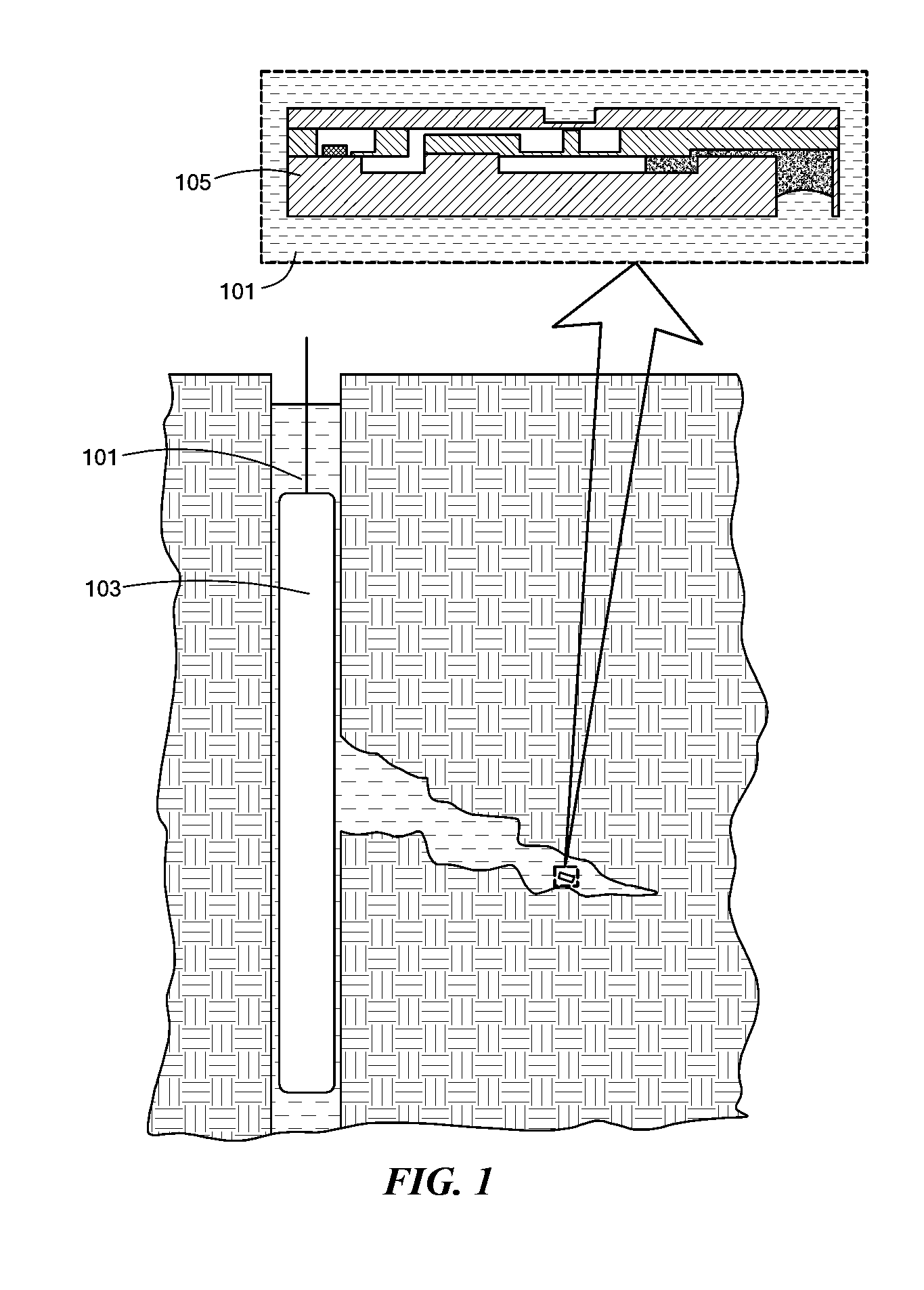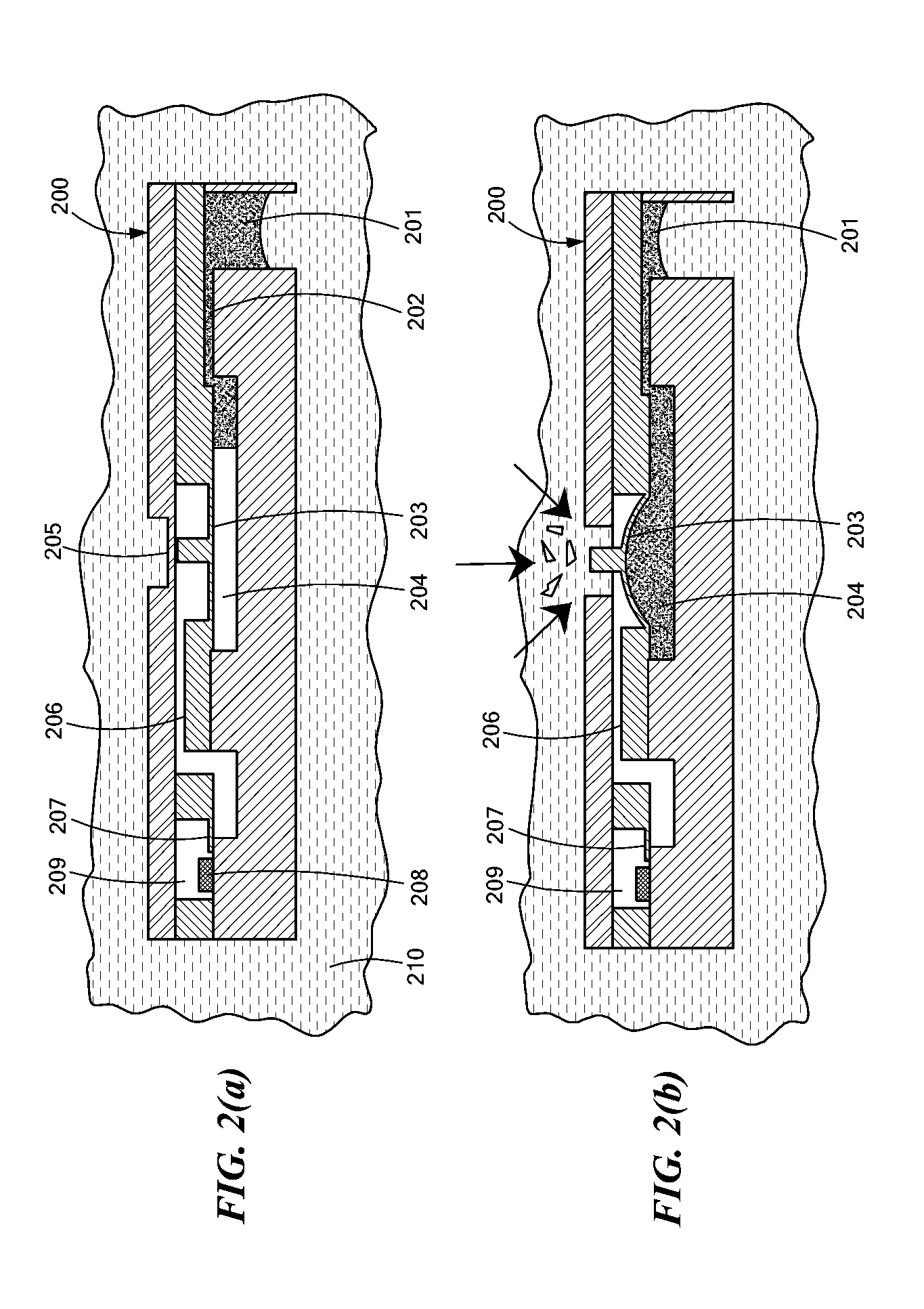Such operations are hindered by the harsh subterranean environment specific to oilfields, including high
temperature and pressure (HPHT), corrosive fluids, and severely constrained geometry.
The difficulty in acquiring and performing measurements on fluidic samples in such an environment are further complicated by use of electronic sensors that typically require power, monitoring and / or
telemetry.
Measurements of fluid properties and composition from an
oil well are difficult to perform in the oilfield environment.
Measurements need to be performed in other types of situations, where the deployment of
active sensing systems with on-board
electronics and
data transmission capabilities may either be impossible due to environmental issues (for example temperatures and pressures that are too high) or may prove to be too expensive to justify economically.
In most cases, these instruments are operated using electrical power, and require sample manipulations that are difficult to automate.
In some environments such instruments may be impractical due to their size (such as in difficult to reach areas, or within downhole oilfield tools), may be dangerous due to their electrical operation (inside explosive environments such as
refinery facilities and tanks, near oil and gas wells), may be incompatible with the shocks or vibrations (within an
oil well), or may be simply difficult to adapt.
Additionally, samples are often required in environments that
pose objective risks and dangers, or that are physically remote, or where frequent sampling using manual devices may prove impractical: sites of nuclear disasters, military battlegrounds,
biohazard or
chemical hazard areas, terrorist
attack sites, remote natural resources such as rivers and lakes, coastal waters and other offshore locations,
deep water and sub-sea environments.
In such cases, robotic equipment may need to be deployed, and the capability to take and analyze such samples may provide important information that cannot be acquired using the on-board in-line sensors present on such equipment.
Certain chemical or biochemical
sample preparation protocols may require more complex sample manipulations, such as reaction with a first
reagent, waiting for an incubation or reaction time, and then bringing the sample in contact with a second
reagent.
In certain applications, the moment when a sample needs to be acquired may not be known in advance, so that a pre-programmed sampling sequence may not be appropriate.
Unintended leaks, spills or discharges occur frequently around industrial sites, and may affect environments such as the deep ocean (off-
shore environment), a river, a lake, an
estuary, the coastal water, or the
atmosphere.
However, technology today is very limited in terms of deployment and ability to acquire a significant number of samples at multiple depth points, at multiple radial points from the source and at multiple points in time.
Additionally, in most cases, the sampling capability is also not located at the
industrial site, but more likely on-
shore and may take days for the equipment to reach the offshore facility.
This provides a serious risk of blockage,
contamination and / or unrepresentative sampling.
This movement may, or may not, be in the same direction at all times, may not be predictable, and may cause the sampling unit or string of units to be in a position that is not vertically above the original anchoring point, or vertically below a
buoy or similar water-surface
mooring point.
Consequently, this may cause error in the assumed position data associated with the sampling unit or array.
Currently, sample loading and measurement protocols for microbiological measurements often need to be performed manually, requiring specialized labor and equipment and incurring significant costs.
These moments may depend of certain external events that cannot be predicted or anticipated at sampler installation, and therefore the sample acquisition moments cannot be pre-programmed in the sampler design.
It is important that any timing mechanism used to trigger the acquisition of a fluid sample be accurate, however in certain applications such timing may not prove accurate enough.
For example, timing errors in fluidic clocks may occur due to small manufacturing imperfections that may change the overall timing of the sample acquisition.
For example, a ten percent relative error in the volume of a timing cavity will result in a ten percent relative error in the timing of that particular sample acquisition.
If the overall timing was designed to be ten hours, a ten percent error will introduce a one-hour absolute error in the timing, so the sample may be acquired an hour prior to, or an hour later than the scheduled time.
Such timing errors provided by fluidic clocks may become particularly problematic when a series of samples needs to be acquired in sequence.
If there is a ten percent error in the fluidic
clock of each sampling device, that means that it is likely that the order of the sampling events will be disturbed.
 Login to View More
Login to View More 


